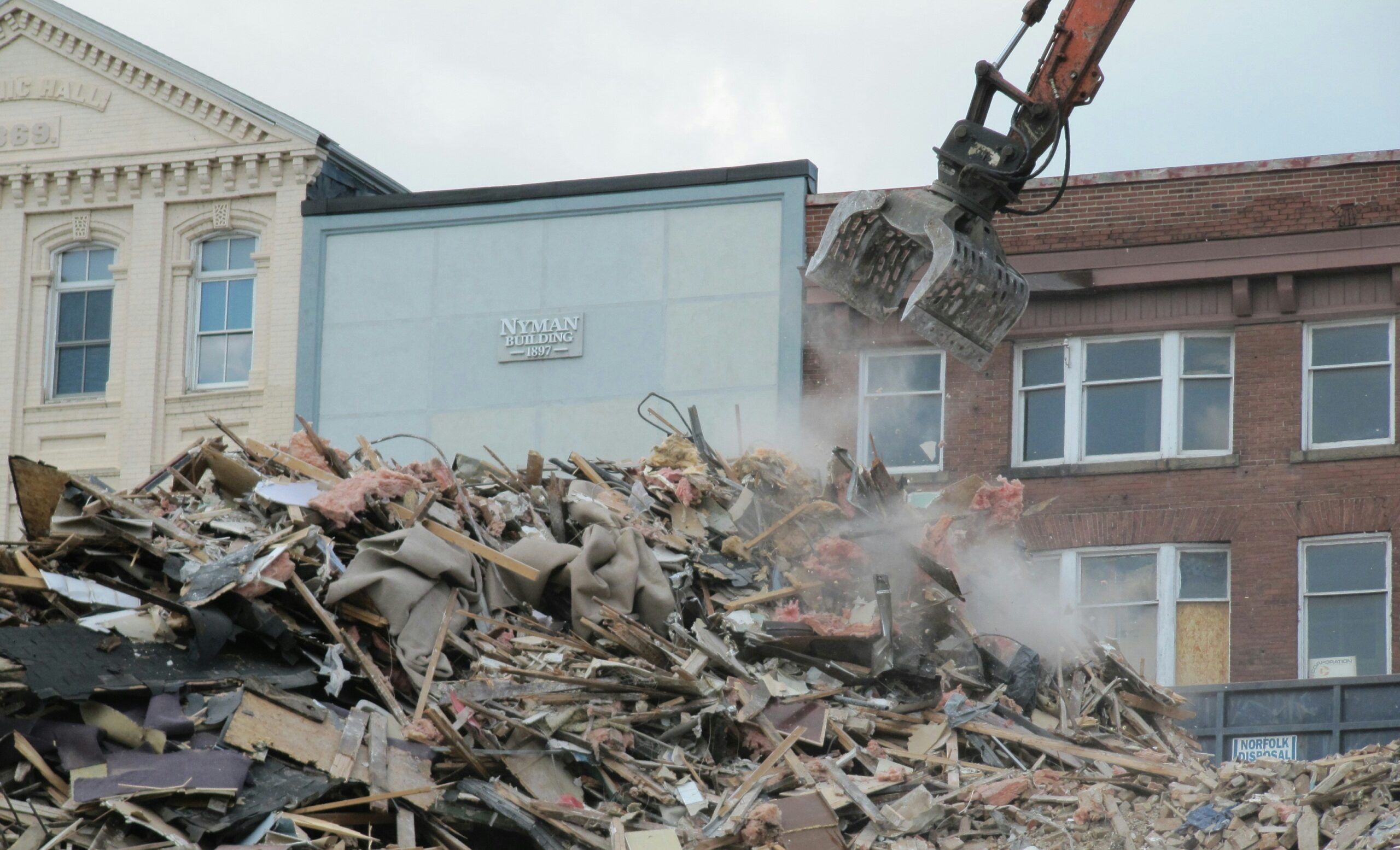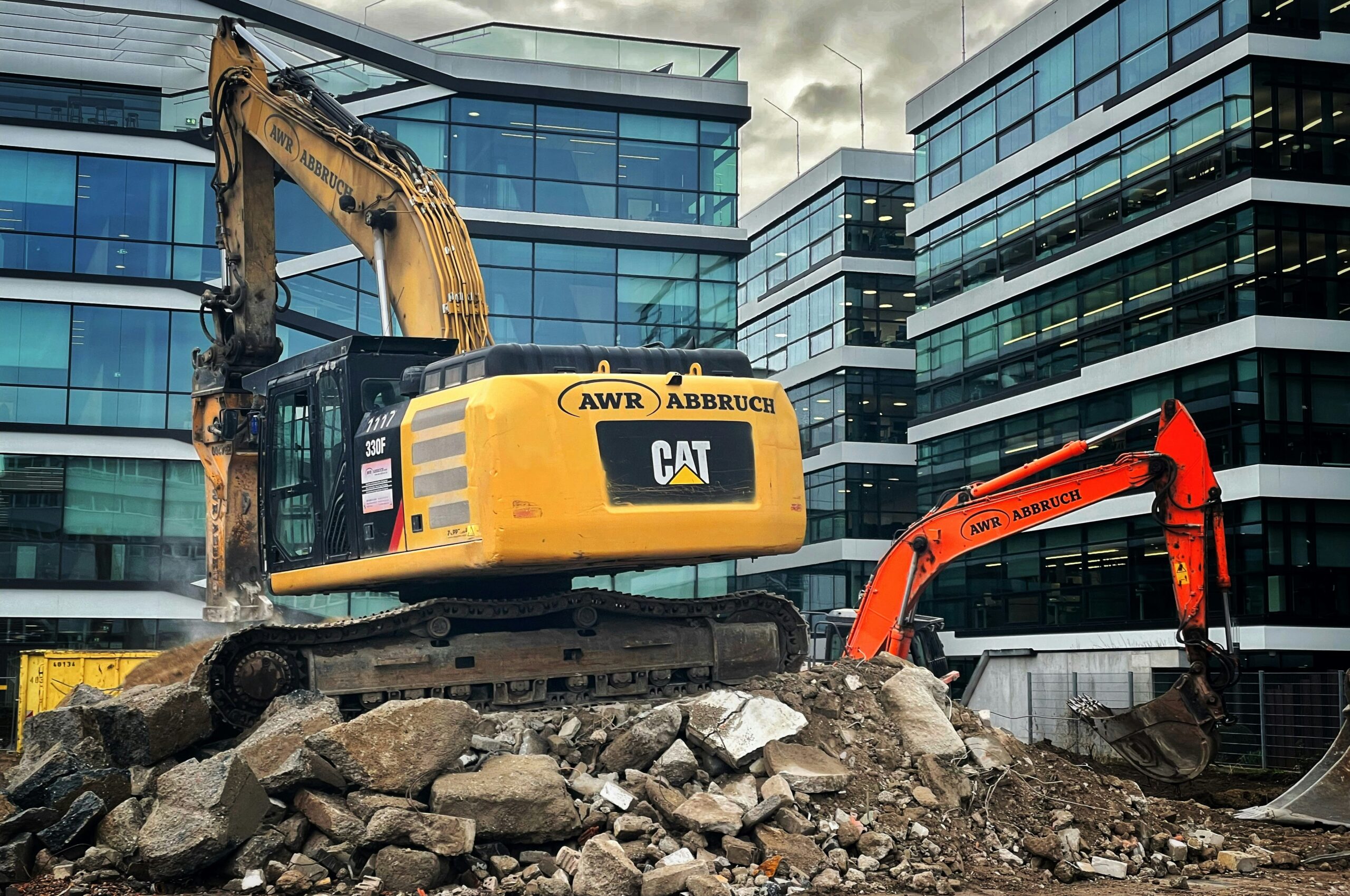5901 Botham Jean Blvd, Dallas, TX 75215
What Are Demolition Waste Recycling Compliance Laws?
June 13, 2025Demolition waste recycling compliance laws regulate how construction and demolition (C&D) materials are handled, processed, and recycled. These laws provide a framework for responsible waste management practices throughout demolition projects in the United States.
The regulatory landscape for demolition waste functions at multiple levels. Federal guidelines are established by the Environmental Protection Agency, while state and local authorities add specific requirements tailored to regional conditions and environmental priorities. This multi-tiered approach ensures comprehensive waste management coverage.
Compliance with these regulations is not just about avoiding penalties. These laws play a crucial role in protecting our environment by diverting valuable materials from landfills, conserving natural resources, and reducing the carbon footprint of demolition activities. The 2023 EPA report on C&D materials indicated that proper recycling can recover up to 70% of demolition waste for beneficial reuse.
How are cities implementing C&D waste recycling laws?

Cities nationwide are creating comprehensive regulations to address construction and demolition (C&D) waste. Denver is a prime example with its innovative ‘Waste No More‘ ordinance introduced in June 2023. This measure received strong support, with 70% of Denver voters approving it in November 2022.
The Denver ordinance mandates that all demolition projects submit detailed recycling and reuse plans before obtaining construction permits. Contractors must also file compliance forms upon project completion to verify adherence to waste diversion requirements. The focus is on diverting valuable materials like concrete, asphalt, clean wood, scrap metal, and corrugated cardboard from landfills.
Implementation in Denver follows a structured approach. The Department of Community Planning and Development oversees the submission requirements for construction and demolition permits. This system ensures accountability throughout the project lifecycle. In Colorado, where C&D waste constitutes up to 40% of landfill materials, these measures represent significant progress toward sustainability goals.
The Denver model shows how voter-led initiatives can transform municipal waste practices. The ordinance establishes clear responsibilities for waste generators and creates pathways for materials to remain in productive use rather than ending up in landfills. This systems-based approach provides a blueprint for other municipalities seeking to implement similar regulations.
While implementation timelines vary between cities, the trend shows increasing adoption of C&D recycling requirements. These ordinances typically focus on materials with established recycling markets and infrastructure. The regulations often include educational components to help contractors understand new requirements and compliance processes.
Cities implementing these laws typically develop networks of approved recycling facilities and service providers. This infrastructure supports the construction industry in meeting new requirements. The focus is on creating practical, achievable standards that meaningfully reduce waste without imposing undue burdens on businesses.
Why is regulatory compliance crucial in demolition projects?

Regulatory compliance in demolition projects goes beyond legal formalities. When properly implemented, it creates a foundation for safe, sustainable, and effective demolition operations that protect workers, the public, and the surrounding environment.
Compliance ensures the proper identification and handling of hazardous materials commonly found in older structures. Materials like asbestos, lead paint, and PCBs require specialized handling protocols under EPA regulations, including the National Emission Standards for Hazardous Air Pollutants (NESHAP), which specifically addresses asbestos management during demolition activities.
Safety is a primary benefit of regulatory adherence. When demolition contractors follow established guidelines, they significantly reduce the risk of accidents, injuries, and exposure to dangerous substances. This protection extends beyond the worksite to surrounding communities, preventing the release of hazardous materials into the air, soil, and water.
Environmental protection is another critical reason for compliance. Regulations mandate proper waste segregation, containment measures, and appropriate disposal methods that preserve natural resources and protect ecosystems. Through compliance-driven waste management strategies, demolition projects minimize their ecological footprint.
- Prevents harmful exposure to hazardous materials for workers and the public
- Reduces air, water, and soil contamination through proper containment measures
- Enables effective material segregation for maximum recycling potential
- Minimizes liability risks and potential for costly fines or project shutdowns
- Creates a documented chain-of-custody for materials handling and disposal
The financial benefits of compliance deserve equal attention. By properly identifying recyclable materials and implementing effective waste management strategies, compliant demolition projects can significantly increase material recovery rates. This approach transforms what would otherwise be waste into valuable resources, offsetting project costs through recycling revenue while diverting substantial material volumes from landfills.
Regulatory compliance also provides important documentation that becomes increasingly valuable over time. Proper record-keeping demonstrates due diligence, creating a verifiable history of responsible material handling that can protect against future liability claims related to contamination or improper disposal.
For municipalities and businesses engaging in demolition projects, compliance isn’t merely about avoiding penalties. It represents a comprehensive approach that balances immediate project requirements with broader responsibilities toward worker safety, environmental stewardship, and resource conservation.
What resources are available for C&D waste recycling compliance?

The EPA provides several comprehensive resources for construction and demolition (C&D) waste recycling compliance. Their website offers guidelines on sustainable management of C&D materials, including best practices for reducing, reusing, and recycling. These guidelines cover everything from designing buildings for future adaptability to proper methods for deconstructing existing structures.
The EPA’s Deconstruction Rapid Assessment Tool helps prioritize structures for salvage and allows project managers to make informed decisions about resource allocation. Their website also features instructional videos on deconstruction techniques and manuals that outline step-by-step processes for properly handling various materials.
For state-specific information, the Construction & Demolition Debris State Resource Locator is an invaluable tool. This resource allows users to find regulatory information, compliance assistance, lists of C&D landfills, and pollution prevention resources tailored to their specific state. Local regulations often vary significantly, making this tool essential for proper compliance.
Environmental considerations are covered by specialized resources on the EPA website. These resources address potentially harmful materials commonly found in construction debris such as asbestos, polychlorinated biphenyls (PCBs), and lead-based paint. Federal regulations strictly control these substances, and the EPA provides guidance on proper handling and disposal methods.
Materials and waste exchanges offer another valuable resource. These platforms serve as marketplaces for buying and selling reusable and recyclable commodities. Some operate as physical warehouses with printed catalogs, while others function as online marketplaces connecting buyers with sellers. These exchanges help divert usable materials from landfills while providing economic benefits.
For those seeking to purchase recycled C&D materials, the EPA’s Comprehensive Procurement Guidelines website offers guidance. This resource helps businesses and organizations identify products made from recycled materials and provides information on their performance and availability.
State environmental agencies typically offer additional resources including waste management strategies, hazard evaluation guides, and information on recycling opportunities. Many provide detailed documentation on compliance requirements specific to their jurisdiction along with technical assistance for construction projects.
Conclusion: The future of demolition waste recycling compliance
The demolition waste recycling sector is experiencing significant changes. Regulatory frameworks are becoming stricter as governments address environmental concerns and limited landfill space. The industry is adapting by adopting technologies that enhance material recovery and reduce environmental impact.
These regulations offer benefits beyond compliance. Construction and demolition companies that adopt sustainable waste management practices often achieve cost savings through lower disposal fees. They also play a crucial role in environmental protection by diverting valuable materials from landfills and reducing the need for new resources. As the circular economy gains momentum, companies that exceed compliance requirements will maintain competitive advantages in an eco-conscious market.
For help with understanding these regulations and implementing effective demolition waste recycling systems, contact Okon Recycling at 214-717-4083. Our team can help ensure your projects remain compliant while maximizing both environmental and economic benefits.
